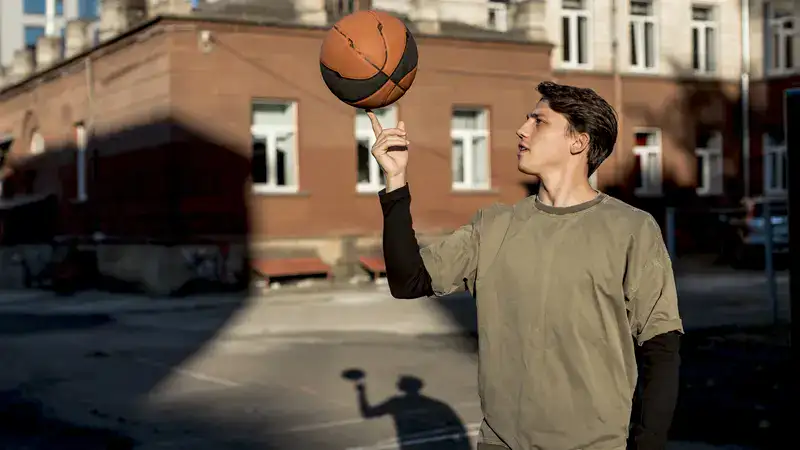Drawing basketball scenes can be both exciting and challenging. Whether you are a beginner or an experienced artist, capturing the dynamic energy of basketball can enhance your skills and expand your artistic repertoire. In this article, we will guide you through the process of Drawing:_tpnhdiv3r8= Basketball players, equipment, and action scenes. We will also provide tips and techniques to help you create realistic and engaging basketball drawings.
Understanding the Basics of Basketball Drawing
Materials You Need
To start drawing basketball scenes, you need a few basic materials. These include:
- Pencils: Various grades from HB to 6B for sketching and shading.
- Paper: High-quality drawing paper that can handle erasing and layering.
- Eraser: A kneaded eraser for gentle corrections.
- Ruler: For accurate proportions and straight lines.
- Reference Images: Photos or live-action scenes for inspiration and accuracy.
Observing the Subject
Before you start drawing, spend time observing basketball players in action. Notice their movements, postures, and how they interact with the ball and the court. Pay attention to the details of their uniforms, the texture of the basketball, and the layout of the court. Observation helps you understand the dynamics of the game and improves the accuracy of your drawings.
Drawing a Basketball
Step-by-Step Guide
- Outline the Shape: Start by drawing a perfect circle to represent the basketball. Use a compass or trace a circular object if needed.
- Add the Lines: Draw the basketball’s lines. Begin with a horizontal line that curves with the shape of the ball. Then, add two curved vertical lines intersecting at the ball’s poles.
- Detailing: Enhance the lines by making them slightly thicker and adding texture to represent the basketball’s surface.
- Shading: Add shading to give the ball a three-dimensional look. Determine your light source and shade accordingly, creating depth and realism.
Tips for Realistic Basketball
- Texture: Create a pebbled texture by lightly stippling the surface.
- Highlights: Add highlights to the edges where the light hits the ball directly.
- Shadow: Place a shadow beneath the ball to ground it and add realism.
Drawing Basketball Players
Proportions and Anatomy
When drawing basketball players, it’s essential to understand human anatomy and proportions. Basketball players are often tall and muscular, with long limbs and lean physiques. Use basic guidelines to map out the body’s proportions:
- Head: Draw an oval for the head.
- Torso: Sketch the torso with a slightly curved line for the spine.
- Limbs: Use long lines to represent arms and legs, considering the joints and muscle structure.
Capturing Movement
Basketball is a dynamic sport, so capturing movement is crucial. Here are steps to draw players into action:
- Gesture Drawing: Start with quick, loose sketches to capture the basic movement and posture. Focus on the overall action rather than details.
- Structure: Build on your gesture drawing by adding basic shapes to represent the body parts. Use cylinders for limbs and boxes for the torso.
- Details: Refine your drawing by adding muscle definition, facial features, and clothing details.
- Shading: Use shading to emphasize muscles and create a sense of depth. Consider the light source and apply shadows accordingly.
Common Poses
- Dribbling: One hand is positioned on the ball while the other arm is bent for balance. The body leans slightly forward.
- Shooting: The player’s arm extends upward with the ball, and the legs are slightly bent. Focus on the angle of the shooting arm and the posture.
- Defending: The player’s stance is wide with bent knees, and arms are extended to block the opponent.
Drawing the Basketball Court
Elements of the Court
- Dimensions: The court is a rectangle with specific dimensions. Use a ruler to ensure accuracy.
- Lines: Include key lines such as the three-point line, free-throw line, and center circle.
- Hoop: Draw the basketball hoop with attention to its proportions. Include the backboard, rim, and net.
Perspective
Drawing the court in perspective adds realism. Use a two-point perspective for a dynamic view:
- Horizon Line: Draw a horizontal line across your paper. This represents the viewer’s eye level.
- Vanishing Points: Place two vanishing points on the horizon line, one on each side of the paper.
- Court Lines: Draw lines from the vanishing points to define the court’s dimensions and lines.
Adding Depth
- Foreground and Background: Include elements such as players, benches, and audience to add depth and context.
- Shading and Highlights: Apply shading to indicate the light source and create a three-dimensional effect.
Techniques for Enhancing Your Basketball Drawings
Shading and Texturing
- Cross-Hatching: Use cross-hatching to add texture and depth to your drawings. This technique involves drawing intersecting lines to create shadows and highlights.
- Blending: Blend your shading with a blending stump or your finger for smooth transitions. This technique is especially useful for creating soft shadows.
Detailing
- Uniforms: Add details to the players’ uniforms, including logos, numbers, and fabric texture.
- Facial Expressions: Capture the intensity and focus of the players through detailed facial expressions.
- Dynamic Poses: Practice drawing dynamic poses by studying real-life games and photos. This will help you capture the energy and movement of the sport.
Using References
- Photos: Use photos of basketball players and games as references for accurate details and poses.
- Videos: Watch videos of basketball games to understand the flow and movement. Pause at key moments to study the poses and actions.
Conclusion
Drawing basketball scenes requires a combination of observation, an understanding of anatomy, and mastery of drawing techniques. By following this guide, you can create realistic and dynamic basketball drawings that capture the excitement and energy of the sport. Remember to practice regularly and use references to improve your skills. Whether you are drawing a simple basketball or a complex action scene, these tips and techniques will help you achieve your artistic goals. Happy drawing!
